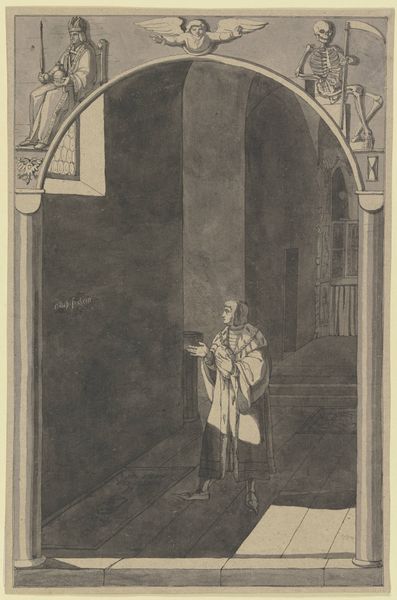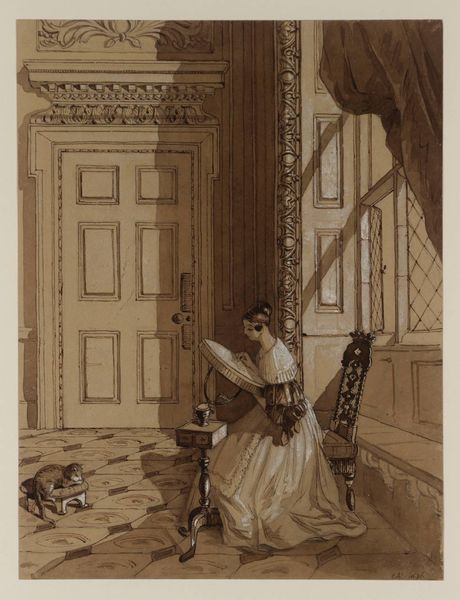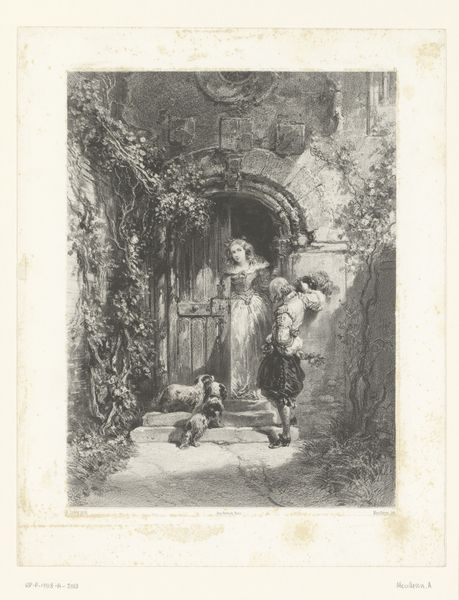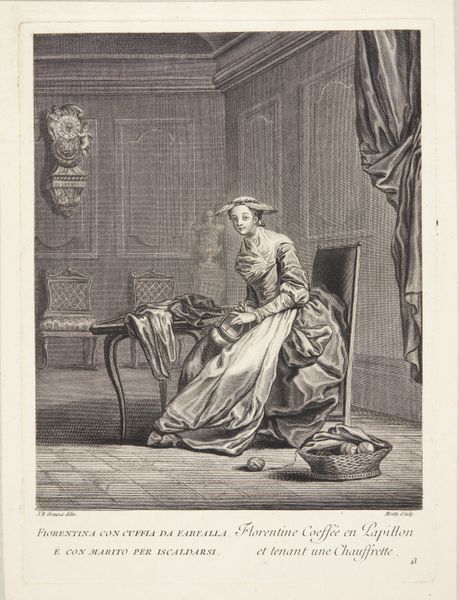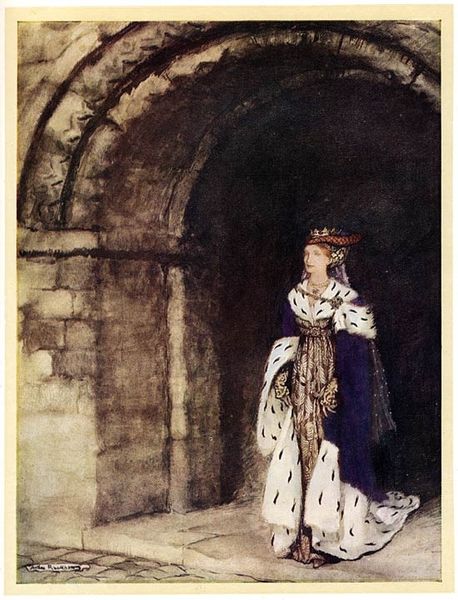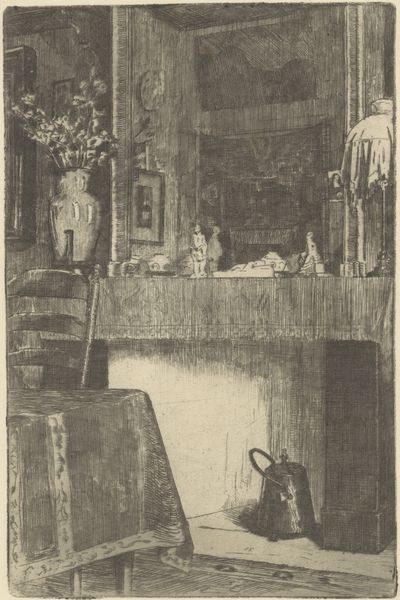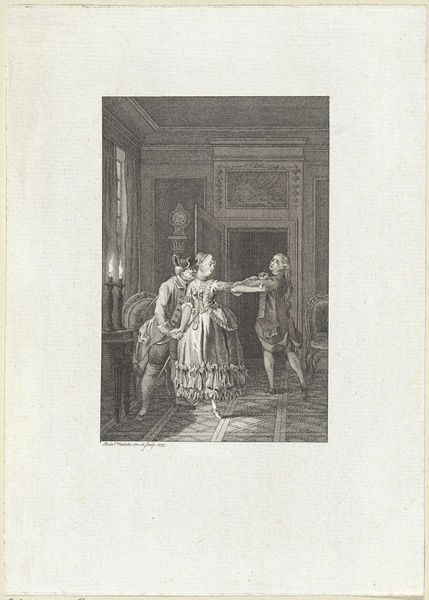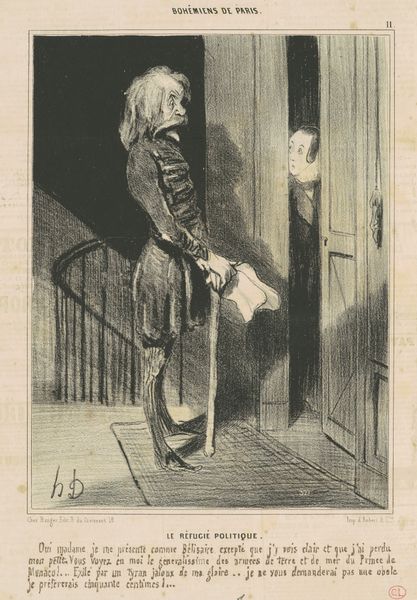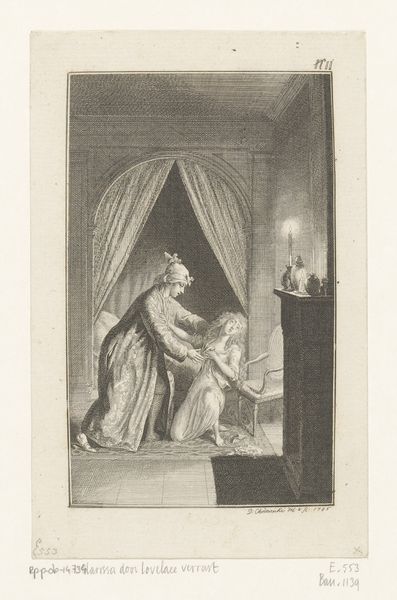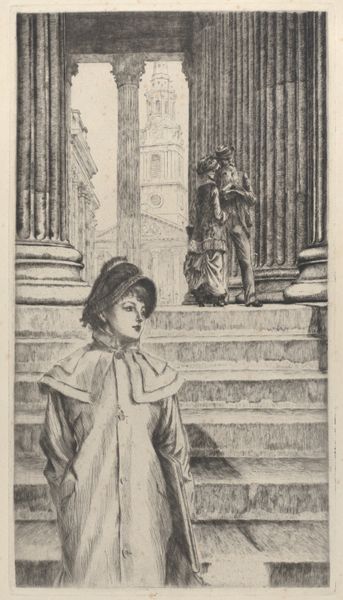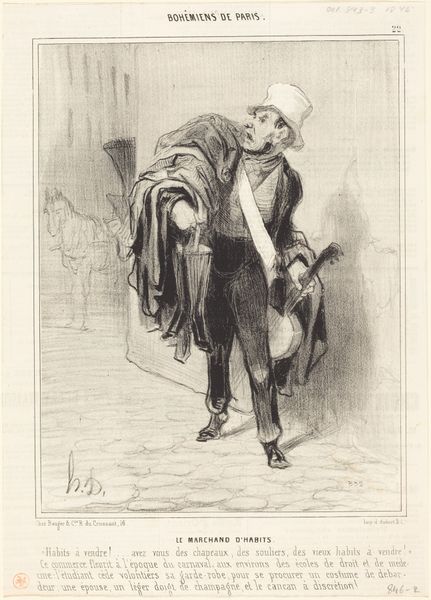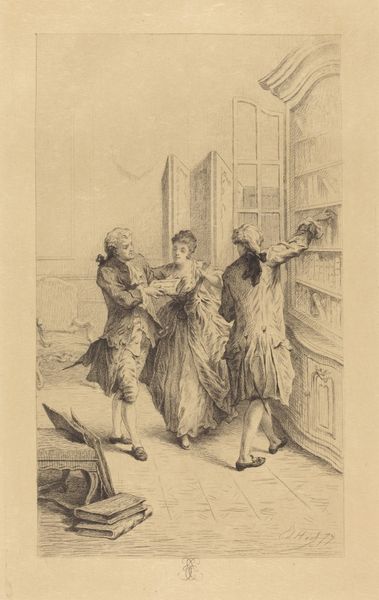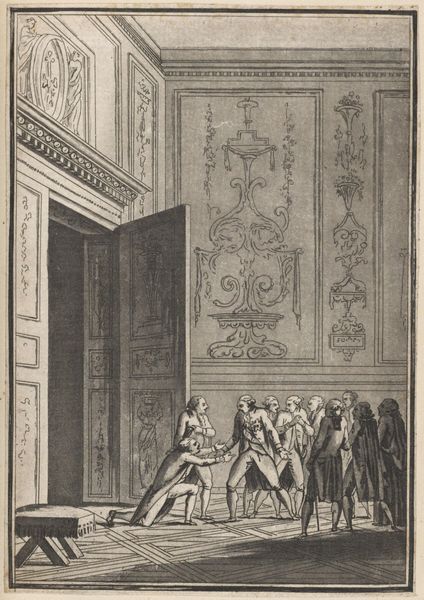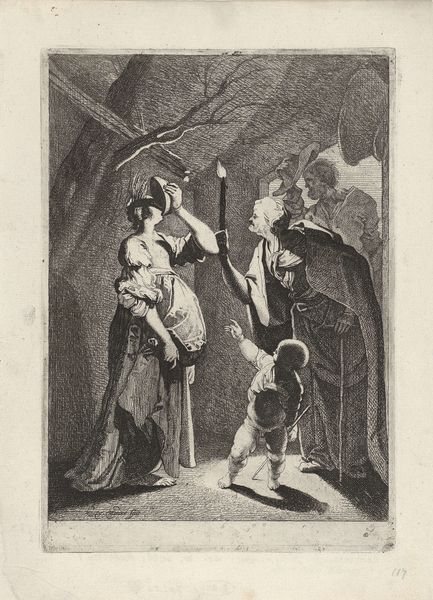
tempera, painting
#
medieval
#
tempera
#
painting
#
figuration
#
symbolism
#
genre-painting
#
history-painting
#
mixed media
Copyright: Public domain
Editor: Byam Shaw's tempera painting, 'Faust - "No, Thou Shalt Pray No More"', made in 1910, certainly captures a dramatic scene. The heavy shadows and imposing architecture create an atmosphere of guilt and despair. How do you interpret this work? Curator: The visual weight given to architecture can represent both secular and sacred authority in terms of emotional experience. Light becomes a symbol, illuminating or obscuring truths and the drama hinges on Faust's presence – shrouded in red. Think of red as connected to many levels of lived experiences; at a surface level love and at the most violent death. In contrast, observe Marguerite. What colors do we see? How do the figures seem connected? Editor: Marguerite is primarily in white and kneeling. She appears devoted but also isolated. She seems oblivious to Faust lurking nearby, bathed in that crimson cloak you pointed out. Is that the only element of significance here? Curator: Not at all, but red can be overwhelming. Let’s also consider Faust, literally 'fist' in German. Byam Shaw's interest is on what such 'fist' invokes in society - physical power, determination, and struggle - but also what it covers. His 'red cloak' does both. There's also a contrast between Marguerite's contained posture and his more volatile presence that contributes to this psychological drama. Editor: So the red acts as a mask of sorts, hiding something darker behind a bold facade? And Marguerite’s kneeling figure—perhaps it speaks to both piety and vulnerability? Curator: Precisely. And consider that the original viewers were part of this shared knowledge, reading these signs without explanation, inheriting a visual language, adding their experiences into that meaning-making system, that continues today. Editor: I never considered the layering of meanings in colours and forms so directly. Thank you for unveiling the multiple levels of reading the symbols, as visual connections with many historical contexts.
Comments
No comments
Be the first to comment and join the conversation on the ultimate creative platform.
